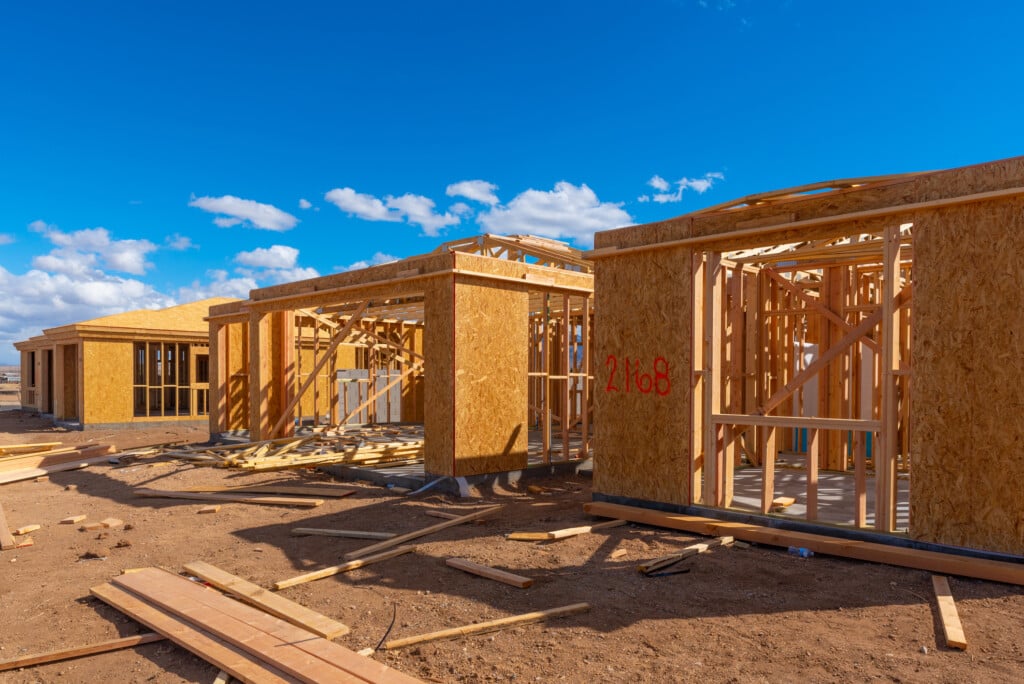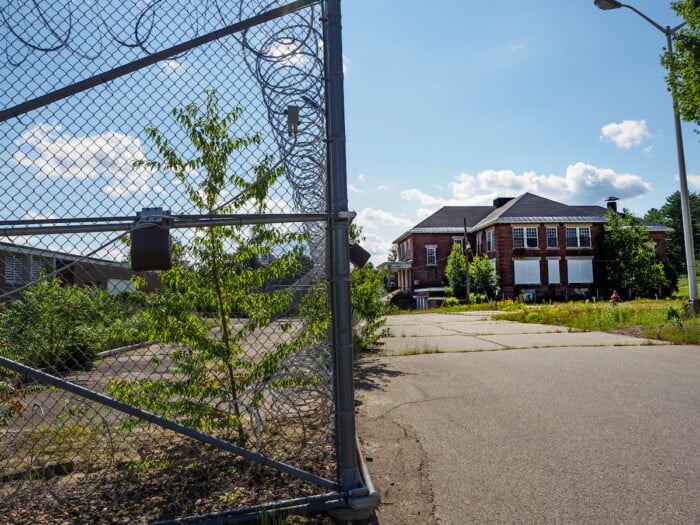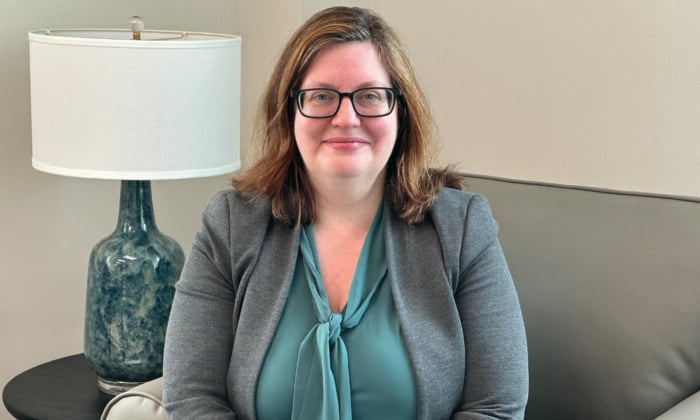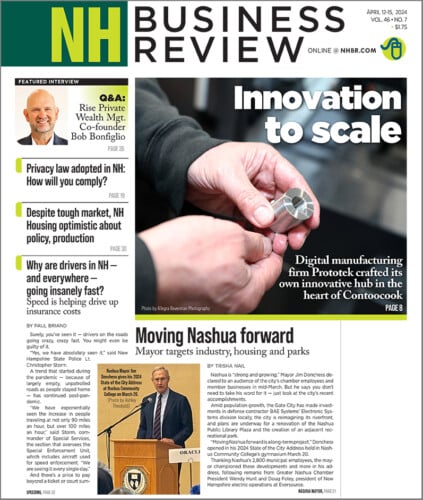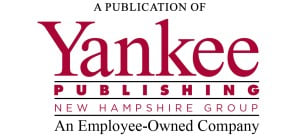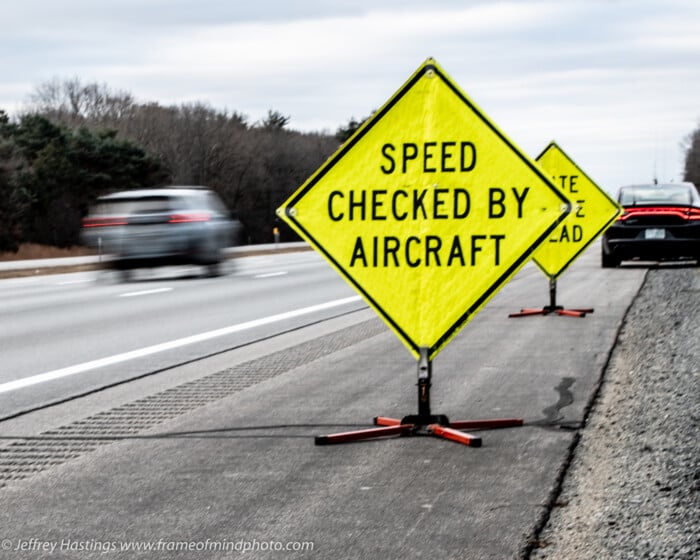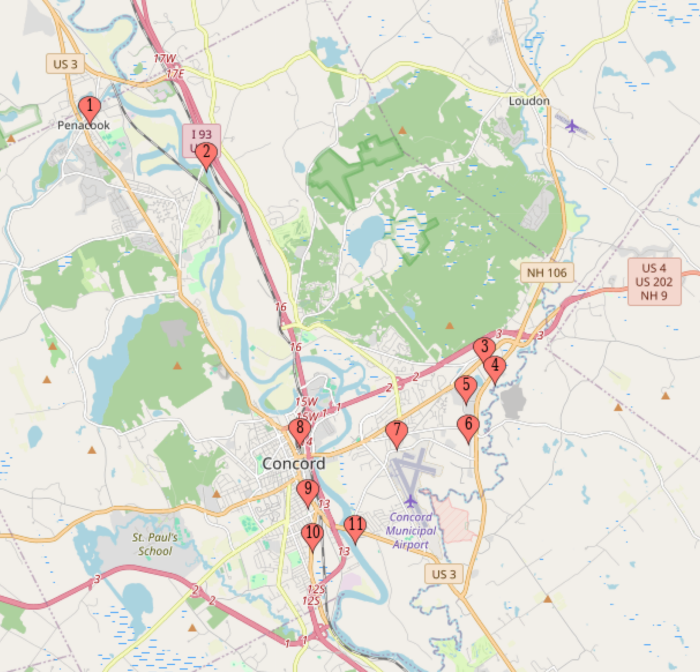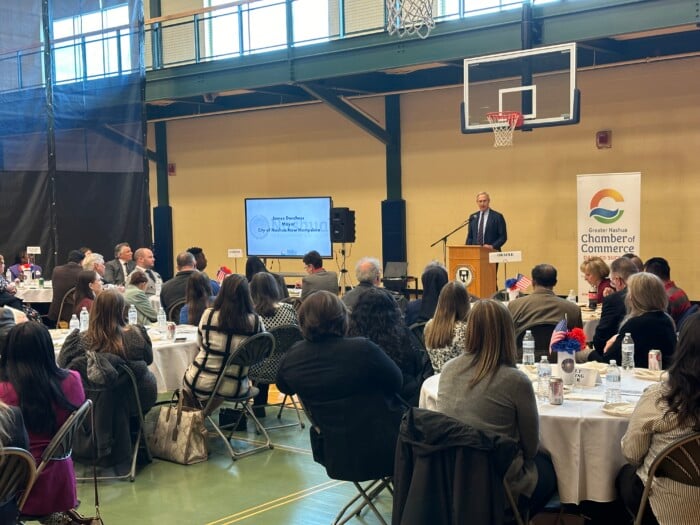Engineering firms design for NH’s future
The innovations and calculated decisions behind structures we utilize everyday
From the expansion of I-93 to improving drinking, wasterwater and stormwater systems across the state, New Hampshire engineering firms demonstrate their expertise in executing large-scale projects that impact all Granite Staters. We spoke with a panel of leading engineers to discuss the decisionmaking behind the projects that create a safer, more efficient and more
accessible future for New Hampshire.
Our panel:
Doucet Survey, Inc., President William Doucet – doucetsurvey.com.
VHB’s Managing Director Robin Bousa – vhb.com.
TFMoran, Inc., President Robert Duval, PE – tfmoran.com.
Hoyle, Tanner & Associate’s Joe Ducharme, Jr., PE, BCEE – hoyletanner.com.
Doucet Survey, Inc.
Since 1994, Newmarket-based Doucet Survey, Inc., has been providing land surveying and mapping services to engineering firms, private corporations and public agencies throughout New England. Its highly experienced staff uses a combination of technologies to precisely document existing conditions of natural and manmade features.
“It is essential that site and structure designs be based on accurate surveys of deeded property boundaries, topography, interior and exterior dimensions of structures,” Doucet says. “A New Hampshire licensed land surveyor, bound by New Hampshire rules and standards is the professional that can certify such work.”
Q. What project are you most proud of, and why?
William Doucet: “I am most proud of projects that have fostered the professional growth of our great staff. For example: a week long project in Thule, Greenland (over 1,000 acres of conservation lands), high precision surveys at the Portsmouth Naval Shipyard and recent projects completed using a combination of technologies including our UAV, terrestrial laser scanner and GNSS (Global Navigational Satellite System).”
Q. What role has land surveying played in the ongoing expansion of New Hampshire’s infrastructure?
William Doucet: “Doucet Survey — and all other survey firms in the state — are [among] the first professionals at the start of every infrastructure project in New Hampshire. The advancements in survey and mapping technology allows for increased efficiency but will always require the professional surveyors’ skillset to ensure the public is provided with data that meets state standards for accuracy and precision. The loss of the outstanding survey program at University of New Hampshire Thompson School of Applied Science will increase the challenge of developing the next generation of surveyors in New Hampshire.”
Q. Where do you see your industry in the next 10 years?
William Doucet: “It is an amazing time to be a professional surveyor with its direct impact on so many. From the GPS in your car to Google Earth, to virtual reality data sets of entire cities, all is based on survey. Cars today use tiny lidar scanners to detect obstructions. Surveyors use lidar in the air, water and on the ground. We use our terrestrial laser scanners to capture survey accurate data at a rate of a million points a second. Today we can, in a few minutes, accurately locate our position on the planet within centimeters. We fly UAVs that carry high-resolution cameras and other sensors to map features. Many of these technologies have just become viable in the past 10 years. In the next 10 years, we will see the design work embrace the 3D environment and leave behind vectorized 2D paper plans. They will design in virtual reality based on 3D survey data that we are already capable of capturing.”
VHB
VHB provides a wide range of transportation and site/civil engineering, environmental, planning and survey services.
“What we actually do, though, holds such much more meaning than that,” says VHB Managing Director Robin Bousa. “For more than 30 years, our local team in Bedford has helped state agencies, municipalities, energy companies, schools, hospitals and businesses identify and solve problems so they — and, in turn, New Hampshire — can thrive. Working together, we’ve helped revitalize downtown areas; construct safer streets for motorists, pedestrians and bicyclists; restore and protect our natural resources; and support energy projects to keep businesses and residents running.”
Q. What VHB infrastructure-related projects have the biggest impact on residents of the Northeast?
Robin Bousa: “As locals, VHB has been honored to play an integral role in improving and expanding New Hampshire’s infrastructure. Over the years, we’ve undertaken diverse infrastructure projects, but each has been equally important to the state’s economic health and the quality of life enjoyed by residents and visitors.
“On the transportation side, we have taken the helm on the design and permitting of some of New Hampshire’s largest mobility projects — including the high-profile and much-anticipated I-93 widening project in the southern part of the state. Watching the benefits of this project unfold as portions are completed has been very exciting. It’s particularly rewarding to see the reduction in congestion and improvements in safety.
“On the energy side, we are helping local energy providers expand and improve their infrastructure. VHB was tasked with providing siting and licensing as well as environmental assessment, permitting and compliance services, for the construction of the Merrimack Valley Reliability Project (MVRP), a joint venture between National Grid and Eversource. This new 345-kV electric transmission line along a 24-mile route between National Grid’s Tewksbury 22A Substation and Eversource’s Scobie Pond Substation in Londonderry is a key link in the New England regional power network. It went into service on December 21, 2017. These projects are vital to the health and well-being of New Hampshire, and VHB is excited to assist our clients with achieving their goals and successes.”
Q. What role did VHB play in the I-93 Windham/Salem project?
Robin Bousa: “The project is certainly an impressive feat, both in its size and in the benefits it will bring to the state. At a high level, it involves reconstructing the existing two-lane interstate into a four-lane facility, with complete interchange reconstruction. This will go a long way toward helping to improve capacity and safety along this gateway corridor into New Hampshire. VHB has been actively involved with the various stages of this project for nearly 15 years. We completed an Environmental Impact Statement (EIS) for the entire 20-mile-long project area in 2005. After this, we began providing the New Hampshire Department of Transportation (NHDOT) with final design services for the southernmost four miles, which extend from the Massachusetts state line through the communities of Salem and Windham, New Hampshire. As lead designer for the southern segment, VHB has provided project management; highway, stormwater, erosion control and signal design; design for multiple park-and-ride facilities; structural design for bridges, retaining walls and culverts; right-of-way assistance; traffic control design; development of construction contract breakout; Intelligent Transportation Systems (ITS) engineering; noise wall design; and environmental floodplain mitigation design. As you can see from the vast list of services and expertise provided, the I-93 project is a great example of how VHB uses a collaborative and integrated services approach to producing smart, cost-effective and sustainable solutions to our clients!”
Q. What are some of the biggest challenges when working on infrastructure-related projects?
Robin Bousa: “When it comes to infrastructure projects, there is no such thing as ‘one size fits all.’ Therefore, one of the biggest challenges we face is striking a balance between all the moving pieces that will go into a project. Understanding our clients’ needs and expectations sets the stage for this. It helps us develop options for their consideration, and for formulating the best solutions. For example, using the latest technology to upgrade a traffic signal system could provide the best operational results and minimize congestion on a roadway; however, the expenditure for that solution (equipment or its maintenance) may exceed the available budget. Conversely, the least expensive layout for the construction of a new transmission line may actually result in more environmental impacts than an alternative that is a less direct route. The challenge is finding the middle ground, while working within the project constraints to achieve the intended goals. Working with our clients and associated permitting agencies from the very beginning of an infrastructure project is key to helping ensure success and managing everyone’s expectations. It’s a tricky task sometimes — and one that VHB professionals strive to do well.”
TFMoran
TFMoran, which is celebrating its 50th anniversary this year, is a leading consultant to the land development industry, offering civil, structural and traffic engineering, land surveying, landscape architecture, construction support and environmental permitting services. Originally a local firm in southern New Hampshire, TFMoran’s practice area now extends throughout the state and into Massachusetts, Maine, Vermont, New York, Pennsylvania and New Jersey. TFMoran has always been a leader in bringing innovative land planning and smart development practices into the marketplace. The firm is proud of the strong corporate brand that it has created over the past 50 years, and is always seeking innovative ways to deliver best-in-class client service. In 2016, TFMoran was named “Business of the Year” in the real estate, construction and engineering category by Business NH Magazine, and also earned a statewide “Best of Business” award in the engineering firm category for the last six years in a row from New Hampshire Business Review readers.
Q. In what ways have TFMoran projects helped advance the ongoing expansion of New Hampshire’s infrastructure?
Robert Duval: “One of the most important skills that TFMoran has developed over the years is the successful redevelopment of under-utilized urban and industrial land. We have played an integral role in many of the region’s most significant redevelopment projects, among them the SNHU Arena and the Fisher Cats Stadium in Manchester’s urban core; redevelopment of the Bedford Mall, Wayfarer Hotel, and former Macy’s properties in Bedford; a major expansion of the GE Aviation Plant in Hooksett, conversion of several mill buildings in Lowell and Lawrence to residential/commercial use, and designing a new 1,700 car parking garage at the south end of Manchester’s historic Millyard, currently under construction. These few projects alone provide hundreds of millions of dollars of new tax base revenues to the local community. In addition, they are bringing vibrancy and prosperity to our historic urban centers, and helping restore the charm and character that makes New England such a great place to live and work.”
Q. What does TFMoran do differently that makes it stand out as an engineering firm?
Robert Duval: “What makes TFMoran different is our corporate culture. In addition to being leaders and innovators in our industry, we are also active members of our communities. We strongly encourage all employees to become involved outside the workplace in professional and community organizations. We believe an involved person is a caring person, and a caring person will create better designs — designs that have a more positive impact on their surroundings, and designs that save our clients time and money. This is why TFMoran is known for providing superior value to our clients at competitive rates.”
Q. What has been your firm’s biggest challenge and how did you overcome it?
Robert Duval: “One of the biggest challenges we face in today’s development world is intense schedule pressure. All across the industry, we are seeing a demand for delivery of a project in the shortest possible timeframe. Owners and developers are finding it difficult to wait for projects to wind their way through the approval process as their users are looking for immediate results. Meanwhile, the regulatory process is becoming ever more complex and pervasive. Over the past few years, understanding the unique needs and opportunities of each project, we have found many innovative and creative ways to navigate the new regulatory environment within our clients’ aggressive schedules. We have worked hard to develop our reputation for meeting these challenging deadlines, and we are proud of our impressive track record.”
Hoyle, Tanner & Associates
Hoyle, Tanner & Associates is a full-service consulting engineering firm whose work positively impacts the public every day. Hoyle, Tanner was founded in 1973, largely as an environmental firm whose early project work focused on implementation of water quality projects in response to the EPA Clean Water Act of 1972. The firm’s technical expertise has expanded over time to include bridge and highway design, aviation, land development and building design, drinking water and wastewater treatment, asset management, grant applications and MS4 stormwater compliance. Hoyle, Tanner provides a broad range of services to its public and private sector clients, ranging from the traditional project phases of study, design and construction to project specific elements such as permitting, capital improvement planning, condition assessments, public presentations, construction observation and funding agency assistance. The firm maintains its headquarters in Manchester, New Hampshire with regional offices in Portsmouth, New Hampshire; Yarmouth, Maine; Burlington, Vermont; North Andover, Massachusetts; and Oviedo, Florida.
Q. In what ways have Hoyle Tanner projects helped advance the ongoing expansion of New Hampshire’s infrastructure?
Joe Ducharme, Jr.: “Hoyle, Tanner’s broad range of engineering services touches people from all walks of life, daily. Our engineers, planners and technicians apply industry design standards to deliver safe, reliable projects to our clients considering sustainability, energy efficiency and economic impacts. We use innovative tools such as drone technology and high-precision GPS locating to advance conceptual level designs to better inform project decisions early in the project. Our commitment to delivering accurate designs has led to a high level of trust and long-standing client relationships with communities, State DOTs and our private sector clients. We support a broad range of professional associations who advocate for improved infrastructure funding.”
Q. What Hoyle Tanner infrastructure-related projects may have the biggest impact on New Hampshire residents?
Joe Ducharme, Jr.: “Hoyle, Tanner’s core services in aviation, bridge and highway, land development, and water quality impact New Hampshire residents daily. For example, we are currently preparing design documents for the rehabilitation of the eastbound Amoskeag Bridge in Manchester, which carries a high volume of daily commuter traffic into the city. The planned bridge deck repairs will extend the service life of the bridge another 25 years or more. Our highway work throughout the state not only improves pavement conditions but also brings the roadway designs to current safety standards by upgrading guardrails, improving driver sight distances, and improving drainage systems to handle runoff from intense storms. Our aviation group’s projects focus on improving safety of airport runways, site security and noise mitigation. Hoyle, Tanner’s environmental division works on a broad range of projects to improve drinking water, wastewater and stormwater systems throughout the state.”
Q. What are some of the biggest challenges when working on infrastructure-related projects?
Joe Ducharme, Jr.: “There are always technical challenges to overcome on every project, but engineers are trained to address these challenges. In the assessment phase of a project, deficiencies of a system will be noted, alternatives considered and opinions of costs developed, to establish a baseline for comparison of the alternatives. Repeatedly, across many engineering disciplines, the biggest challenge to advancing infrastructure improvements is a lack of adequate funding. The cost of construction materials has risen steadily for decades, but funding programs for bridges, highways, aviation and water quality projects has not kept pace. The New Hampshire Department of Transportation (NHDOT) maintains a 10-year plan for bridge and highway improvements that is underfunded. The Federal Aviation Administration (FAA) routinely updates safety requirements for our nation’s airports, but competition for funding exceeds program capacity. Our state’s drinking water, wastewater and stormwater systems are aging and in need of rehabilitation and replacement due to failure or obsolesce. The New Hampshire Water Pollution Control Association (NHWPCA) reported at their annual Legislative Breakfast in March 2018 a backlog of more than $2 billion in water quality infrastructure projects in New Hampshire. Public awareness is growing, but national and state government will need to support increased infrastructure funding to aid communities whose dollars are already spread thin get critical infrastructure projects implemented.”
Q. How do you see your industry evolving in the next 10-20 years?
Joe Ducharme, Jr.: “At Hoyle, Tanner we embrace the use of technology to improve our efficiency in design and project delivery. As new and better tools become available, we will evaluate and increase our use of cost-effective technologies. The effects of changing weather patterns have led the engineering industry to re-evaluate how we address stormwater runoff and intense storm events -— which affect all areas of our engineering practice. Much of the storm-related damage over the past decade is indicative of aging infrastructure designed to standards that did not consider the intensity and frequency of recent weather events. We foresee a shift in the industry to update design standards to accommodate more intense storm events. Hoyle, Tanner is prepared to meet these challenges by using cutting edge modeling software in our designs, staying abreast of changing design standards through staff training and workshops, and supporting industry associations who maintain a strong interest in advancing infrastructure improvements to protect public health and the environment.”
